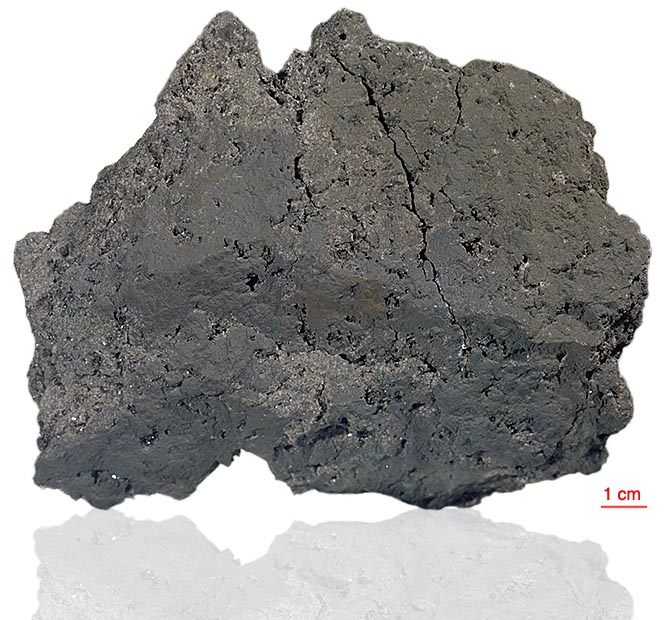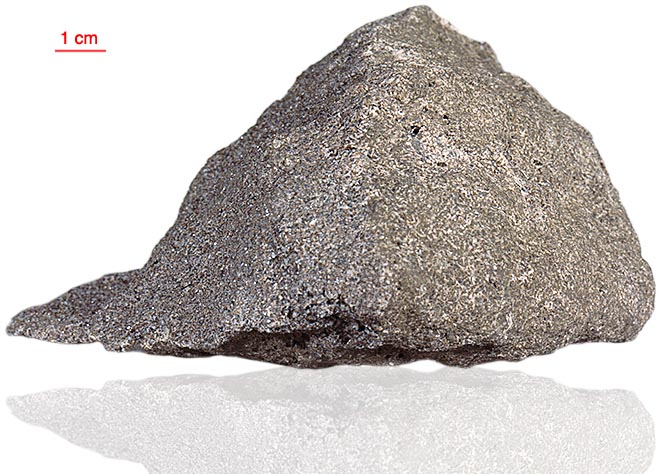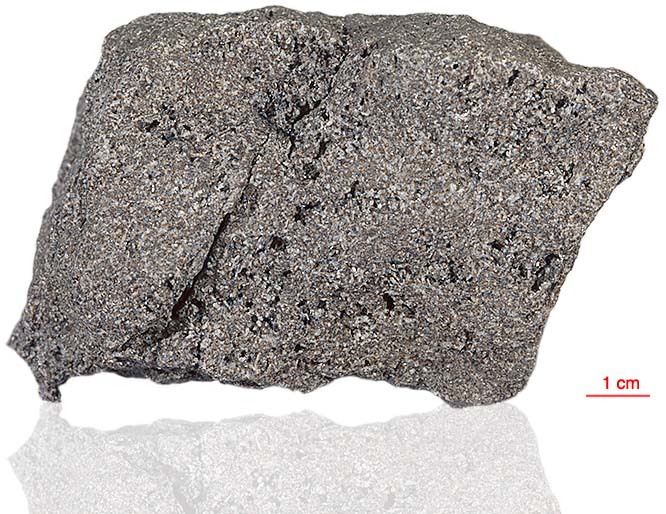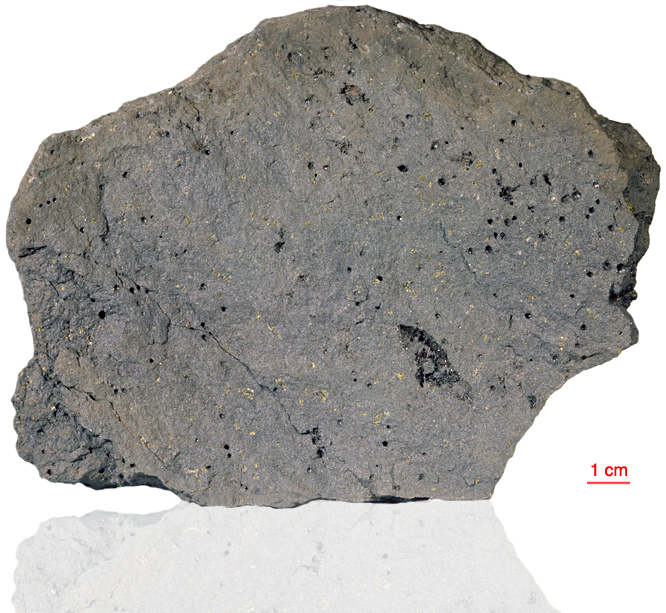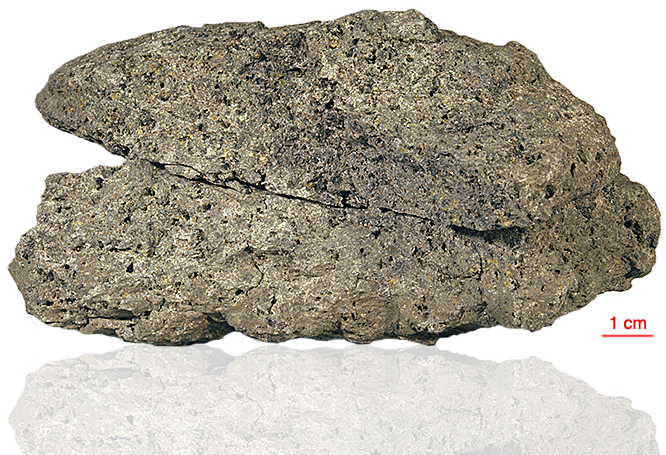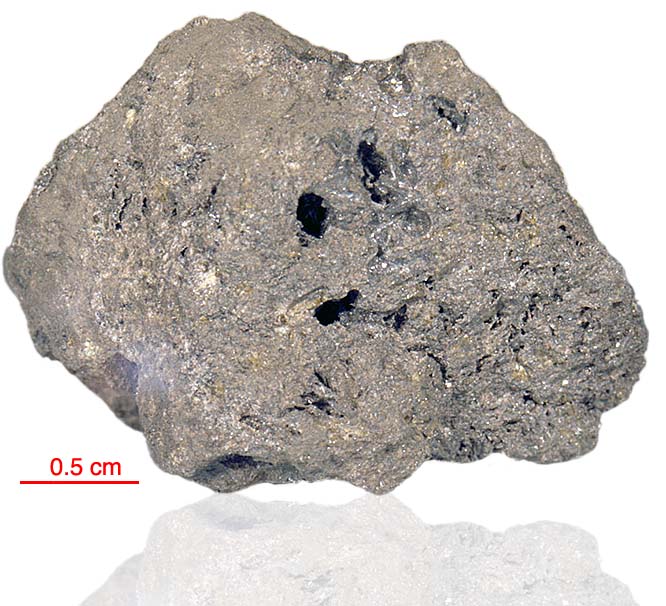
Fact sheet
Lunar basalts 71035, 71036, 71037 and 71055 were all chipped from the top of a 0.5 m tall boulder. All samples are the same kind of high-Ti basalt with low olivine (rotation 1) and silica contents. These samples are all very vesicular - up to 30%. Vugs extend up to 12 mm. The texture has been described as plagioclase-poikilitic. Average grain size is 1–2 mm with seriate grain size distribution. The largest pyroxene grains (up to 2 mm) are typically composite and composed of pale-pink (Al- and Ti-poor) to dark-pink (Al- and Ti-rich) arranged in parallel bands, in a radiating spherulitic pattern (rotation 2), or forming an hourglass structure.
The sample weighed 14.39 grams before analysis and has not been dated.
Further details of this and other Apollo samples are here: http://curator.jsc.nasa.gov/lunar/
Apollo 17, the final manned landing mission, had two objectives: to obtain samples of ancient rocks from the lunar highlands and to look for evidence of younger volcanic activity on the valley floor.
This small Collection contains material deriving from both periods, including igneous rocks around 4.3 billion years old from the lunar highlands as well as younger volcanic samples dating from about 3.6 billion years ago.
Apollo 17 was launched on 7 December 1972.

